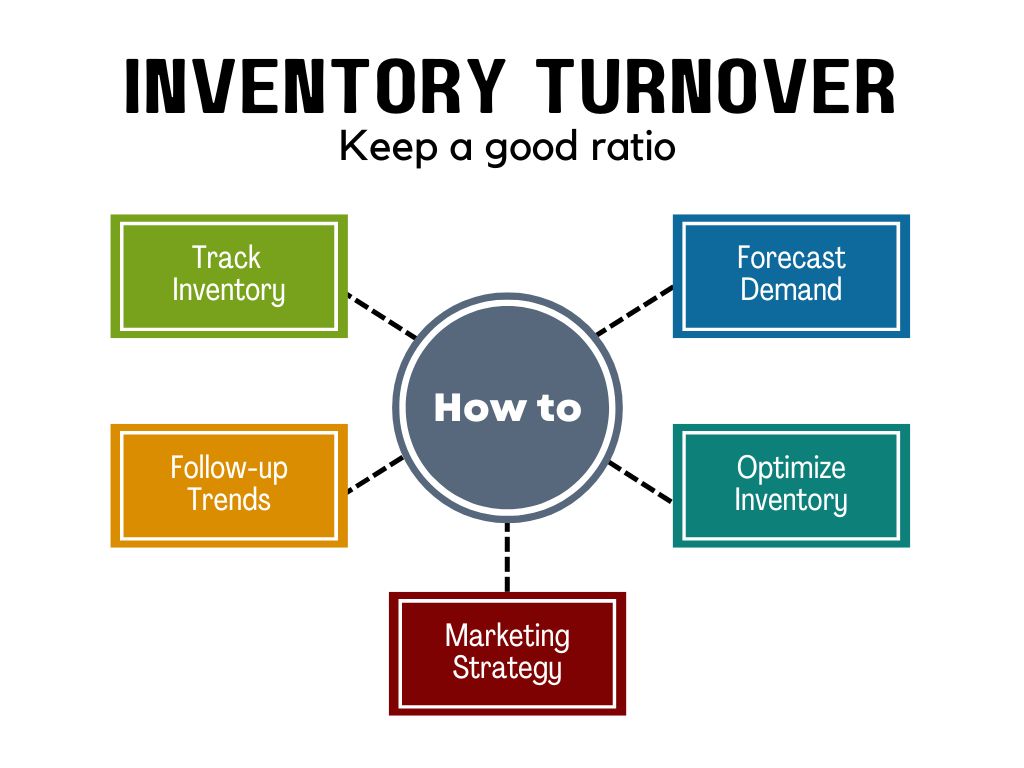
The more efficient the system is, the healthier the company is with its cash flow. However, if a company exhibits an abnormally high inventory turnover ratio, it could also be a sign that management is ordering inadequate inventory, rather than managing inventory effectively. Simply put, the inventory turnover ratio measures the efficiency at which a company can convert its inventory purchases into revenue. Balancing turnover with adequate stock levels is crucial to avoid these disruptions.
Fails to Consider Seasonal Demand Patterns
Consider promoting products that have been sitting around for a while to consumers outside your established customer base. You could also use email marketing and social media marketing to highlight specific products to existing and prospective customers. The Inventory Turnover Rate (ITR) is an essential metric that shows how quickly a company sells and restocks its inventory. It provides valuable insights into the frequency of inventory turnover, helping shape strategies around purchasing, production, and sales. The inventory turnover rate treats all items the same, which can result in misguided decisions about stocking levels, especially when comparing high-margin items to low-margin ones.
- DSI is calculated as average value of inventory divided by cost of sales or COGS, and multiplied by 365.
- Companies using AI and machine learning for predictive analytics can improve forecast accuracy by 30% to 60%, according to McKinsey & Company.
- This enables you to analyze the performance of your stock keeping units and make impactful decisions that are based on accurate information.
Our Services
On the other hand, a low ITR indicates that products are lingering in stock longer than they should. This could be due to overstocking, a dip in demand, or a combination of both factors. To tackle a low ITR, strategies might include launching promotions to boost sales, revising purchasing plans, or expanding the range of products offered to attract more customers. Inventory turnover is an especially important piece of data for maximizing efficiency in the sale of perishable and other time-sensitive goods. An overabundance of cashmere sweaters, for instance, may lead to unsold inventory and lost profits, especially as seasons change and retailers restock accordingly.

Analyzing Balance Sheets
For a trading concern, an inventory/material turnover ratio of 6 times a year is not very high. One would expect a trading company to have a faster rate of stock turnover. Before calculating the inventory turnover ratio, we need to compute the average stock and cost of sales. Inventory formulas are equations that give you insight into the health and profitability of your inventory. Useful formulas to know are inventory turnover, which is cost of goods sold ÷ average inventory, and sell-through rate, which is units sold divided by units received over a set period of time. When you have low inventory turnover, you are generally not moving products as quickly as a company that has a higher inventory turnover ratio.
The information for this equation is available on the income statement (COGS) and the balance sheet (average inventory). Modern inventory management systems provide real-time data on stock levels, helping businesses make informed decisions about when to reorder. With tools like barcoding, RFID, and IoT sensors, companies can track stock accurately, reducing excess inventory and boosting turnover. A company can improve its inventory turnover ratio by optimizing stock levels, reducing overstock, and increasing sales.
Free Financial Modeling Lessons
This number means that, within a year, the sock retailer turns over its inventory around 2.3 times. Depending on what your store’s inventory management goals are, this might be a satisfactory rate to maintain. To calculate the inventory turnover ratio, divide your business’s cost of goods sold by its average inventory. A higher Inventory Turnover Ratio indicates faster inventory movement, implying effective sales strategies, reduced holding costs, and potentially lower risk of obsolete inventory. Conversely, a lower ratio might indicate overstocking, poor sales, or ineffective inventory management.
This ratio is calculated by dividing the cost of goods sold (COGS) by the average inventory for the period. The inventory turnover ratio shows how many times a company has sold and replaced inventory during a given period. Calculating this ratio can help businesses make better decisions on manufacturing, pricing, marketing, and purchasing new inventory. Depending on your industry, a slow turnover may imply weak sales or possibly excess inventory, whereas a fast turnover ratio can indicate either strong sales or insufficient inventory.
These rates will differ whether a company sells apparel, furniture, electronics, food, beauty products or vehicles. Other differentiators are whether a business operates a niche store or a large department store with multiple types of products. Since these companies specialise in finished goods, they are less complicated than other industries, but there are challenges. Two components of the formula of ITR are cost of goods sold and average inventory at cost.
Therefore, storekeepers and other officials should deliberate on whether to retain or dispose of such items in order to save further storing or handling costs. In other words, their average stock is one-third or one-quarter of their annual cost of sales. Income ratio is a metric what is average payment period and how to calculate it used to measure the ability of a technology to recover the investment costs through savings achieved from customer utility bill cost reduction. The ratio divides the “savings” by the “investment”; an SIR score above 1 indicates that a household can recover the investment.
Manual data entry and tracking can lead to errors that disrupt inventory management and affect turnover rates. IPA minimizes these errors by automating repetitive and data-intensive tasks, resulting in more accurate inventory records. With accurate data, companies can make better decisions about purchasing, stock levels, and forecasting, which directly impacts turnover. It relates to financial metrics like profit margins and cash flow, showing how well assets are utilized. Retailers often have higher ratios due to frequent sales, while manufacturers may have lower ratios due to slower production. This article explores the concept of inventory turnover, its significance, the formula to calculate it, and the impact of a high inventory turnover ratio.
